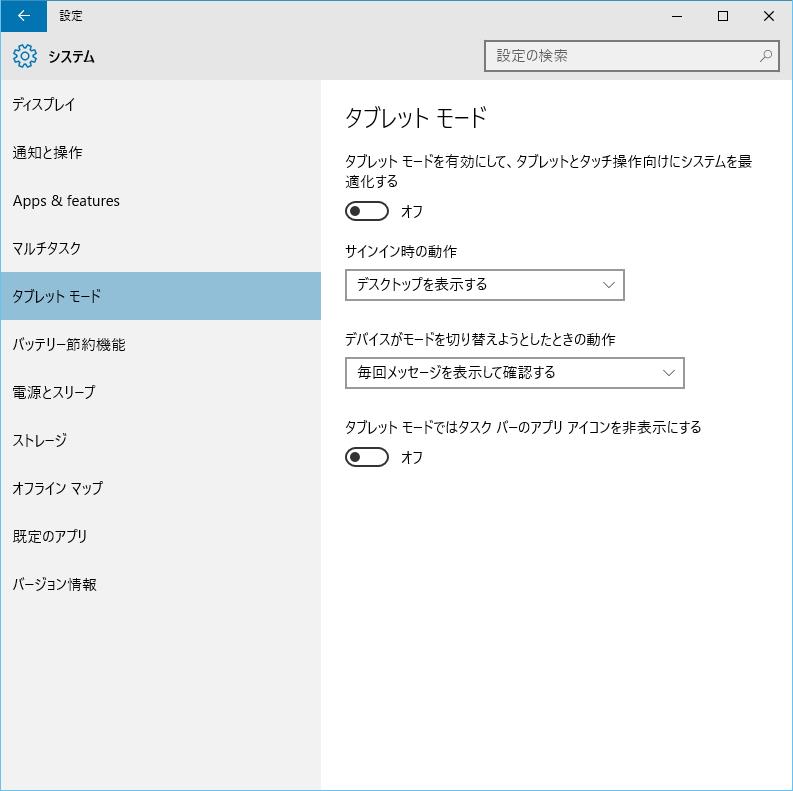Windows 10 tablet mode settings
The "tablet mode" installed in Windows 10 is to provide a user interface that suits each type of PC. Let's take a look at tablet mode and related settings by shape.
Tablet mode is set in "Settings" ⇒ "System" ⇒ "Tablet mode" (Figure 1).
Figure 1: In "Tablet mode", set automatic switching and mode at startup
In addition to this, there are settings that should be specified depending on the shape of the PC, such as desktop or tablet, "Settings" ⇒ "System" ⇒ "Multitasking" (Fig. 2).
Figure 2: In "Multitasking", specify whether to display window candidates on the empty side when snapping
You will also need to change the settings for the "Taskbar" tab (Fig. 3) and "Toolbars" tab (Fig. 4) in the "Taskbar and Navigation" control panel for tablets and desktops.
Figure 3: In the "Taskbar" tab, set the behavior when the mouse cursor goes to the bottom right of the screen
Figure 4: In the Toolbars tab, specify whether to turn off (disable) the taskbar search, show the icon, or show the search box

In addition, when using on the desktop, there are also setting items in the right-click menu of the taskbar (Fig. 5).
Figure 5: The desktop menu in the toolbar allows you to turn on/off the task view button and the touch keyboard button.
Also, if necessary, you can set up quick actions in the action center ("Settings" ⇒ "System" ⇒ "Notifications and actions". Fig. 6) to make it easier to use.
Figure 6: By default, the top of the quick action is the tablet mode button, so it is better to change it to another button on the desktop.
Desktop PC
There are still quite a few desktop machines with a keyboard and mouse connected. Recently, there are also "all-in-one" types that use mobile hardware, but the essential part is the same as a desktop PC. For a desktop PC, keep "tablet mode" turned off, and consider settings mainly for using desktop apps.
For desktop machines, the basics were to conform to the user interface up to Windows 7. Also, except for the "Settings" app, we assume that there are few UWP apps and store apps. In addition, the resolution is relatively high, and it is assumed that it will be used on a large display.
Specifically, I kept tablet mode off and made the desktop as close to Windows 7 as possible.
Tablet PC
In the case of a tablet, here we assume a typical Windows tablet with a display size of 8 inches or less, or a vertical display ( width becomes shorter). Also, in principle, there is no use of keyboard and mouse together (it's not that they can't be used), and we are thinking of operating only by touch. For tablets with a large display size, please refer to the 2in1 setting.
2in1 or a tablet with a detachable dedicated keyboard
In the case of 2in1, it can also be a tablet, but you can use the keyboard and touchpad (mouse) together to make it look like a conventional notebook PC. may be used for However, even if there is a keyboard or touchpad, there is a possibility that touch operations will come in to some extent. Also, compared to simple Windows tablets, the screen size is often larger than 10 inches.
The basic idea is that it can be used on both a tablet and a desktop, and the tablet mode is automatically switched. This is a compromise between the aforementioned tablet PC and desktop PC.
 notebook-laptop
notebook-laptop






